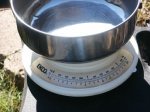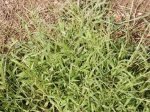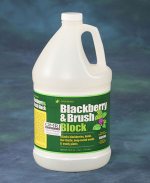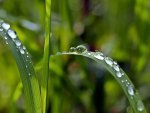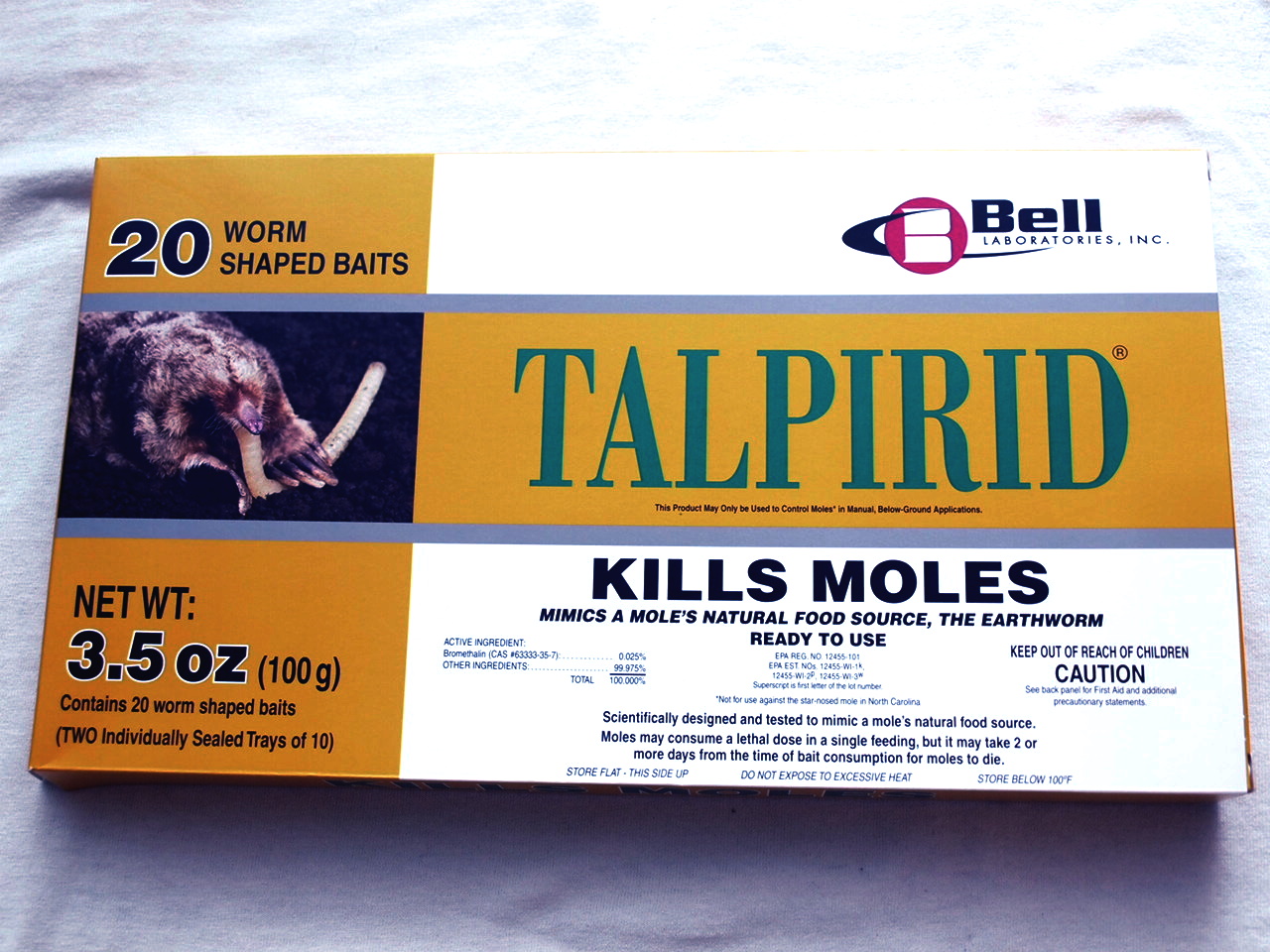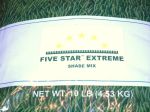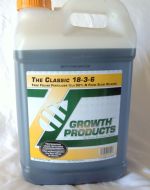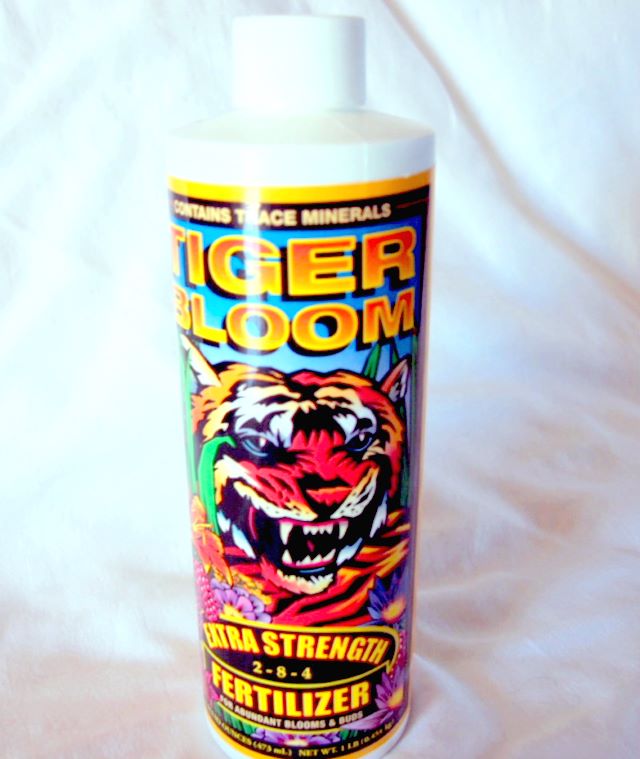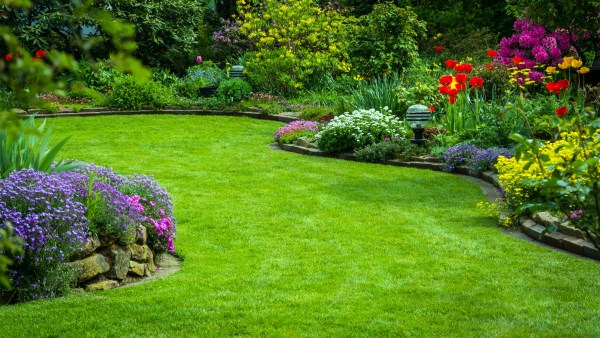The Lawn Care Academy Blog
Looking for the latest lawn care tips and trends? You have come to the right place. You will find detailed information for everything from zoysia to fescue and organics to conventional fertilizers and much more.
Subscribe buttons for the blog (Orange RSS Button) are in the left hand navigation panel below the menu. Right click on RSS to subscribe to the blog. If you're not familiar with Blogs or RSS, or if you don't have an RSS reader, click on the question mark where it says "Subscribe to This Site" to get started.
Lawn Care Academy is Under New Ownership
Lawn Care Academy has been sold and is now owned by Stephen Smith from Agrigro Marketing Inc.
As the previous owner, I have retired and my wife and I are now living on the Mississippi Gulf Coast where I can do more fishing. But, know this, I will miss all the people who have loved the site along with all the hours spent on the phone and through emails talking to many of you about lawns and fields. It has been a great pleasure!
It is with great sadness that I surrender the reins to Stephen, but I know he will take this to areas unreached before. Remember, we know that beautiful lawns do not occur by accident, they are created! Always keep learning!
God Bless you all!
Russ James, retired but not finished. I am just starting all my new adventures on the Gulf Coast and as I follow Jesus, the King of Kings and Lord of Lords!
Elemental Sulfur VS Sulfate
Sulfur is a necessary nutrient for dark green grass, photosynthesis and other plant functions.
Elemental Sulfur works differently in the soil than Sulfate. Elemental Sulfur will lower the soil pH and is used where the pH is too high. Sulfate, such as in Ammonium Sulfate or Potassium Sulfate, will add sulfur but will not lower the soil pH.
If your lawn is low in sulfur, but your pH is where you want it, what do you do?
Applying Ammonium Sulfate can accomplish what you need. It will give you Nitrogen (Ammonium has 21% N) and also raise the Sulfur content without affecting the soil's pH.
In addition, Sulfate is the only S that plants use. Do not add elemental sulfur unless it is to adjust the pH. If plant tissue test shows low sulfur, apply sulfate.
Wishing You a Merry Christmas and a Wonderful New Year!
All of us at Lawn Care Academy are wishing all of you a Very Merry Christmas! As we look toward a new year, we have our hope in our Lord and Savior Jesus Christ. Be sure to give thanks to him for the season and may your 2024 be the best ever.
We have moved from the Ozarks of Missouri to Coastal Mississippi, but we are still here for you in all your turf needs.
Merry Christmas and a Happy New Year!
Continue reading "Wishing You a Merry Christmas and a Wonderful New Year!"
Grass Seed: When is the Seed Too Old to Plant
Grass seed, by law, comes with a date on which it was tested shortly after it was harvested. Federal law states it must meet the germination percentage listed on the bag. It often doesn't have a "sell by" date, but reputable dealers will get it retested and a fresh label put on if it does well on the retest. Fresh seed harvested and bagged within the same year is certainly best. But how old is too old?
To gain a better understanding of aged grass seed, we tested some Turf-type Tall Fescue grass seed that was 4 years old. It was a major commercial brand using Oregon grown seed that always gave us good results. For this bag, we purchased it from a local hardware store that was selling bags of grass from two years old to four years old.
For the test, we planted it in a place where a tree was earlier removed and the previous grass was removed or killed in the process of removing the tree. We used sound planting guidelines, preparing the site first, lightly covering the seed with soil and watered it daily, two or three times daily depending on the temperatures.
After 4 weeks we noticed that nothing came up. Almost no seedlings sprouted.
Fresh fescue grass seed contains about 10% water and has a healthy straw color. Dead grass seed is grey looking. The color of the seeds we planted looked healthy from the outside, but had begun to deteriorate inside damaging it to the point where nothing would germinate.
We did the same with three year old seed. Only about 10% germinated.
We didn't test the two year old grass seed, but I would imaging about 25% or more would have germinated.
Obviously, fresh grass seed is best, using it the same year it was harvested. We Always check the date and if it is last years seed, proceed with caution. While some will tell you that year old grass seed will germinate faster, this is not solid science. A lot will depend on how it was stored. If you have an option, always get the freshest seed.
Continue reading "Grass Seed: When is the Seed Too Old to Plant"
Before and After Agrigro Foliar Blend and Liquid Calcium
Many farmers have contacted me about Agrigro's Foliar Blend and Liquid Calcium and what it can do for their pastures.
I have been working with a person in Florida where he planted Oats/Ryegrass/Radish mixture. He said the tops of the oats are turning pale and was looking for a sustainable, environmentally friendly product to help. Here are the results:
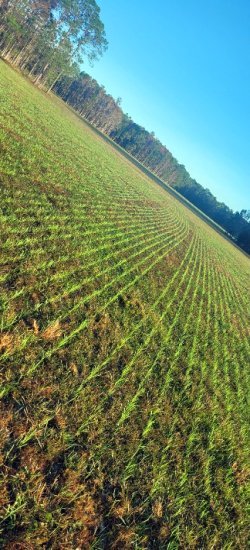
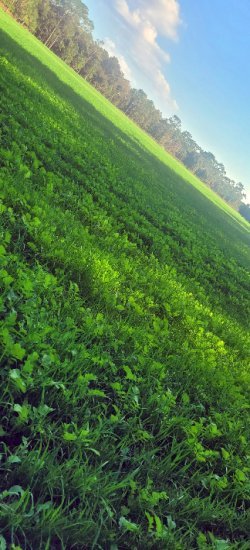
The picture on the left was sent to me on November 25, 2021 and the picture on the right was sent to me on December 15, 2021. It's a big difference in such a short time. There is no question the grass is much greener and healthier and the paling of the oats is gone. If you were to examine the roots you would see double the root growth than it would have been before using the product.
Contact us if you would like more information on Foliar Blend and Liquid Calcium.
Continue reading "Before and After Agrigro Foliar Blend and Liquid Calcium"
Soil CEC and Soil's Nitrogen Capacity
Have you ever had a soil test and it gave you your soil's CEC among other things?
CEC is on a scale of 1 to 50 with 1 - 3 being pure sand and 50 being heavy clay soils. High organic soils are measured in 50 - 100 scale. CEC stands for Cation Exchange Capacity and gives you the nutrient holding capacity.
Sand has a very low nutrient and moisture holding capacity while heavy soils can hold far more of each. How you maintain your lawn or pastures will depend in part on the type of soil you have.
Determining the Soil's Nitrogen Capacity Per Acre
Nitrogen is an important part of maintaining your grass. Did you know that if you take your CEC number, multiply it by 10, that number will be the nitrogen capacity of your soil.
For example, one of my readers in Florida said his soil CEC was 2. If you multiply it by 10 you get 20. His soil is only capable of holding 20 lbs per acre of nitrogen at any given time.
So, if this person was to put 50 lbs of nitrogen on his pastures, his soil would not hold it all. He is wasting his money and allowing the nitrogen to leach.
Therefore, this is a simple and easy way of determining whether your maintenance is working or not.
Easy Spreader Calibration Instructions
Easy spreader calibration for lawn fertilizers. Find step by step instructions so you are putting down the right amount.
Preemergent Herbicide Questions and Answers
A preemergent herbicide used properly is more valuable than many realize. This page contains questions and answers about preemergents.
Continue reading "Preemergent Herbicide Questions and Answers"
Cool Weather Lawn Diseases
Spring brings with it several cool weather lawn diseases. These profiles will help you identify disease symptoms along with management and treatment options.
Killing Crabgrass After It Has Spread
Here are a few tricks to killing crabgrass after it has started to spread.
Grass and Seed Cultivars for Cool Season Grass
Cool Season Grass Cultivars that are currently available in the U.S.
Continue reading "Grass and Seed Cultivars for Cool Season Grass"
Controlling Voles in Lawns Q & A
Controlling voles in your lawn is easy by following a few simple steps. Click here to learn the most effective method.
Arbuscular Mycorrhiza Fungus and Turf Grass
How Arbuscular Mycorrhiza Fungus tremendously helps turf grow and survive.
Continue reading "Arbuscular Mycorrhiza Fungus and Turf Grass"
Soil pH and Buffer pH
I get a lot of questions on the difference between Soil pH and Buffer pH. Well let me explain it here.
Soil pH is on a scale of 0 - 14 with 7 being neutral. Below 7 is acidic and above 7 is base or alkaline. Most plants grow between 5 and 6.5, but there are many that grow best in different pH zones.
Each whole number jump on the pH scale, for example from 5 to 6, is a measure of 10-fold. This means 5 is 10 times more acidic than 6. A pH of 4 is 100 times more acidic than 6.
To raise the soil pH sometimes requires liming material to neutralize the acid and raise the pH. To lower the alkalinity sometimes requires Sulphur to add acidity and lower the pH.
Buffer pH
Not all soil are the same. Some are heavier than others and require more material to change the pH.
For example, lets look at a car tire and a tractor tire. You are trying to put 40 lbs of pressure in each one. First you put air in the car tire. But, it will take a lot more air in the tractor tire to equal the same pressure in the car tire. It is the same with different soils.
Buffer pH means some soils heavy in clay will take more material to affect the rise or lowering of acidity than it will take for sandy soils.
One last thing. Do not go by soil pH alone to determine if you need to lime or not. Soil pH can be affected by all sorts of things. If your soils are low in Calcium and other nutrients, first balance out the nutrients and you will often balance the soil pH as well.
All you may need is Super-Cal Calcium. It raises the calcium saturation of the soil, helps water penetrate the compacted soils better, help with nutrient uptake and provide instant relief where calcium is needed. Plus, Super-Cal Calcium is 40,000 times more soluble than the calcium in lime.
Adding Bountiful Harvest or Turf Formula increases the already present beneficial microorganisms by 5000% in 72 hours. These microbes breakdown organic matter, soil elements and add enzymes that increase nutrients and plant health. They are fantastic products. Try some today.
What is the National Atmospheric Deposition Program???
Nitrogen is a necessary element for plant growth. In fact, it is the element that is needed in the greatest amount. It can occur naturally via soil microbes breaking down soil organic matter, but can also come from other sources.
Did you know that rain brings Nitrogen to the soil? Where does it get it? One source is lightning. Yes, thunder storms will deliver Nitrous Oxide, a natural form of Nitrogen to your plants, but in small amounts.
Another source is Snow. Some states get a lot of it. In a study I read about that was performed in South Dakota, 9 inches of snow, about 2 inches of water, delivered .4 ppm Nitrate Nitrogen and the Ammonium N was .3 ppm. That is only about 3 lbs of Nitrogen per acre.
Three lbs per acre is not a lot of nitrogen, but can affect very sensitive ecosystems positively or negatively.
There is a group that studies natural precipitation of N around the country. It is the National Atmospheric Deposition Program (NADP) Click Here to Check Out the NADP. The NADP keeps track of everything from Nitrogen, Acids and even Mercury that accumulates in soils that got there through precipitation.
Nitrogen in Studies ranged from 2 to 12 lbs per acre. The greatest N accumulation occurs around cities and large agricultural areas. Cities have auto and factory emissions that deliver nutrients in rain. (Plants call it nutrients, scientists call it pollution.) Agricultural areas have ammonium N that comes from soil bacteria as it breaks down manure and other waste and with emissions from ammonia gas.
While it can help, it by no means will satisfy the nitrogen needs of plants. Just take some satisfaction that human effort is not the only way plants get nutrients for growth.
Continue reading "What is the National Atmospheric Deposition Program???"
Calculating Liquid Fertilizer Rates Question
Calculating liquid fertilizer rates
Continue reading "Calculating Liquid Fertilizer Rates Question"
Talpirid Mole Bait kills Lawn Moles
Talpirid Mole Bait kills lawn moles by imitating their natural food - earthworms.
Importance of Watering Lawns Properly
Did you know that properly watering a lawn is just as important as any other major grass maintenance program. Most inexperienced people actually know very little about it. Here are some highlights of what you should know.
For loamy clay soil, watering a lawn deeply down to 4 - 6 inches is standard. Then wait for the grass to start to show signs of moisture stress before watering that way again.
Why?? Because grass roots will learn to grow and reach deep for water. This will help keep grass green when dry, hot times arrive. This approach has been standard in the industry for years, but homeowners think they are hurting their grass and won't do it. Shallow rooting from frequent watering causes extreme stress on plants during high heat times where over-watering was the practice. Shallow, frequent over-watering promotes diseases that can destroy your lawn.
What about sandy soil? Using the above method for clay loam or loamy soil on very sandy soil is not recommended. Sand doesn't have the ability to hold water like loam does. The water will quickly run below the root zone, so watering more often for less amounts of time is recommended. The idea for sandy soil is to give the grass what it needs when it needs it.
On a soil test it will show your soil's composite as a number listed on the soil's CEC. Here are just a few:
Example of soil CEC numbers:
1 - 5 is sand. 8 - 12 Sandy Loam. 16 - 20 Silt Loam. 15 - 28 Clay Loam. 15 - 30 Sandy Clay. 22 - 32 Silty Clay. 30 - 40 Clay.
The more silt or clay the soil has, the better water holding ability it will have and the higher the number will be. Higher percentages of sand will result in lower numbers. The more sandy it is the less ability it will have to hold water.
Soil Lime and Turfgrass - What to Expect
If your soil pH is low, the most common recommendation is to apply lime. But what can you expect when you apply lime to your grass since you have no other choice but to spread it on top?
Lime is Calcium Carbonate. Its primary use is to raise the soil pH as the carbonate reacts to the acid in the soil.
Lime is very slow to dissolve. It can take two to three years to completely dissolve into you soil. But it doesn't work into the soil well and will likely remain in the top couple centimeters. As a result, the majority of you soil will remain unaffected. This is why it is recommended, when possible, to tototill it into the soil. This is not possible with turfgrass.
In addition, the calcium in lime, of which lime contains about 30% to 40% calcium, is very difficult to breakdown as well.
Soil pH can be high or low for many reasons. Everything you put down can have an affect on pH.
Alternatives to Lime
A better choice is to use liquid calcium. Super-Cal Calcium is 30,000 times more dissovable than calcium is lime and builds the calcium saturation in soil. It is immediately available from the moment you apply it and the organic acids in Super-Cal dissolve unavailable lime so it continues to deliver calcium for the next 90 day. Universtiy of Illinois Extension found that one gallon of Super-Cal was equivelent to 500 lbs of lime due to the organic acids.
Its Affect on Beneficial Soil Microbes
In soil tested before the addition of Super-Cal and Turf Formula, the soil microbes were at 2,500,000 CFU/Gram.
When Turf Formula or Bountiful Harvest Preboitic Biostimulant was applied, within 24 hours the soil microbes increased to 127,500,000 CFU/Gram.
When the Turf Formula was combined with Super-Cal the soil's natural microbial levels increased to 187,000,000 CFU/Gram. (Colony Forming Units). That is a huge increase over the control.
Check out our pages on Super-Cal Calcium and Turf Formula.
Lawn Thatch Problems and Solutions
Lawn thatch problems and solutions for sports turf and home lawns.
Watering a New Lawn the Right Way
The method we use for watering a new lawn is critical to its growth and survival. This page will give valuable tips to help ensure great results.
Deep Watering Grass on Established Turf
The How's and Why's of deep watering grass on established turf.
New Lightning Facts (It's Not What You Thought)
Everybody knows lightning is dangerous. We have all heard of someone who was hit by it.
Did you see the episode of "The Simpsons", where Honer Simpson was caught in a lightning storm and was describing what happened?
Homer said, "I picked up a piece of sheet metal to cover my head and ran for the tallest tree". On the cartoon, he was then struck by lightning. So, if this was real life, was it the tall tree that attracted the lightning or the sheet metal over his head. I bet most would say it was the sheet metal. The second most popular answer would be, both the tree and metal, right?
But John Jensenius, sometimes called Dr. Lightning, has been studying lightening and its effects for decades. Twenty years ago he realized that people just didn't understand why lightning would hit people.
Myths About Lightning
The Truth About Lightning
Lightning is not actually attracted to anything you have on.
Rather, it simply hits the tallest object around. The number one activity people are doing when hit is not golfing, but fishing. Fishermen are 4 times more likely to get hit by lightening than golfers. This is because they are often the tallest object on the water.
Lightning can kill you. Just be sure to get off the water or off the golf course during a storm. Make sure you are not the tallest object around.
Here is a link if you want to read more. Newest Research on Lightning Strikes
Continue reading "New Lightning Facts (It's Not What You Thought)"
Super-Cal vs Lime
I get a lot of questions about how Super-Cal and Lime compare. These are great questions.
It should be noted that the only reason lime is shown on soil tests is for the purpose of raising soil pH. But you should never apply lime based on pH alone.
Lime is Calcium Carbonate. It contains between 30 - 40 percent calcium. However, most lime in the soil is not available to plants except under certain acidic conditions. Getting calcium from lime is not easy at .0005% solubility. It takes up to 2 years for lime to become available to plants after it is applied. In established turf, applied lime does not easily move down into the soil where it needs to go.
The Advantages of Super-Cal/Agri-Cal
Super-Cal and Agri-Cal are both derived from Calcium Chloride. It is safe to apply and is filed under the government's "GRAS" catagory (Generally Recognized as Safe). Everything you eat can be found under GRAS. Calcium Chloride is often used as a food grade additive.
Calcium Chloride is 30000 times more soluble than the calcium in lime. It is immediately available to plants from the moment it is applied.
In addition, Super-Cal and Agri-Cal both have proprietary ingredients that increase beneficial microbes that help solubilize unavailable calcium in the soil for plant use. University studies have shown that one gallon is the equivalent to 500 lbs of lime due to the microbial action.
When raw calcium chloride is liquified, the calcium and chloride completely separate. In the liquid they are both free agents. When sprayed, the calcium binds with the CEC sites in the soil and the chloride (only 3% chloride) doesn't bind with anything in the soil. It remains a free agent and travels with water in the soil. The plants use what it needs and with the first hard rain it is gone.
Calcium Chloride cost less than lime and you simply can't afford not to use it. Many people have told me they will never go back to lime.
The Myth of Soil Sterilization from Synthetic Fertilizers
Is soil sterilization the result of using synthetic fertilizers on our lawns? This page offers a detailed and thought provoking look at this commonly repeated lawn care myth.
Continue reading "The Myth of Soil Sterilization from Synthetic Fertilizers "
How Much Water Does it Take...
Many people have high water bills. If you are concerned about how much water per week you are using, here is some help.
How many gallon does it take to put 1" of water over a 1000 sq. ft.?
Many grasses needs approx. 1" of water per week during summer. Therefore, to put that much water down here is what you are looking for:
This will give you an idea of how much water you are using and what your bill may be each month. Contact your water company for more pricing information.
Dangers of Recycled Water and Salt Content
Many areas use recycled water, especially in drier locations. Since sports fields and golf courses use so much water, recycled water is sometimes an option for them.
Salt Content of Recycled Water
Recycled water comes from many sources, including waste treatment facilities. If this is what you use for your outdoor water, keep in mind that it is processed with people in mind, not plants. They are concerned more about bacteria levels and not so much salt levels.
Salt is not needed for plant growth. When it accumulates in soil, it binds in the CEC sites in soil and displaces other nutrients. Since Na (sodium) is twice as large as Ca or Mg, for example, the sodium ion will displace two Ca or Mg ions.
Na ions in soil makes the soil impenetrable. Water will often stay on top of the soil. Roots will dry out by pulling moisture out of the roots, a process called physiological drought.
How to Fix Sodium Problems in Soil
What to do to correct salt in water? You first need to have a lab do a SAR test (Sodium Absorption Ratio test). It determines the amount of salt in your water.
One solution may be acid injection into the water. Sulfuric acid causes the Na to break loose and is replaced by other nutrients. The soil becomes porous again and nutrients are again available to plants. It is considered a last resort when other options failed or is not available.
There are other options available, but I won't go into them here. This is to let you know where to start if you suspect salt accumulation is happening from your water source.
Continue reading "Dangers of Recycled Water and Salt Content"
Turf Formula Unsolicited Testimony
| Unsolicited Customer Testimony from a Phone Call Asking About Using Turf Formula in Conjunction with Another Product: "I have been using the Turf Formula since May (2017). Russ, my lawn is phenomenal! It has never looked this good. It is thick, dark green and looks amazing. I now have grass growing where I could never grow grass before and it looks incredible!" William K., New Jersey |
We have received many testimonies similar to this. We don't sell a lot of products, but the products we do sell really do work. If they didn't we wouldn't sell them.
Check out the page and get the product for yourself!
Nitrogen and Grass Clippings
Do you collect your grass clippings or leave them on the lawn? What you do can affect your annual nitrogen applications.
If you maintain your own lawn and are familiar with nitrogen amounts you need to apply each year, then you need to know that grass clippings add to that nitrogen.
Grass clippings, as they breakdown and return nutrients to the soil, can add 1 to 2 lbs of nitrogen each year. If you fertilize, then the grass clippings can add more N back to your lawn than the same grass if you don't fertilize.
Zoysia and Centipede grass, which require lower amounts of annual nitrogen, also puts back lower amounts of nitrogen from grass clippings. Therefore, there is a balance.
If you are figuring your total amount of nitrogen per year, just remember that you can lower your annual nitrogen rate slightly if you leave your grass clippings on your lawn. If you bag them, you will need to add to the annual nitrogen applied to make up for the nitrogen loss of bagged clippings.
This is especially important for sports fields or golf courses that are under pressure to lower nutrient inputs. It is also good for homeowners who are careful about their nutrient inputs as well.
Turf Disease Triangle
Lawn and sports turf disease don't just happen. There are three primary conditions, known as the disease triangle, that must be present for a disease to take off.
The three factors are:
1: A Turf Grass Pathogen is Present (in sufficient numbers)
2: A Susceptible Grass Species
3: Right Environmental Conditions
Each side of this triangle are equally important. If just one of the three above are missing the disease will not take off. If all three are present, then a turf disease can begin.
A skilled turf manager will make it more difficult for a disease to take off.
What It Means
Turf Grass Pathogens: Pathogenic Microbes are everywhere. But there are also beneficial microbes that feed on pathogenic microbes. If the turf disease pathogens raise above the numbers that can be controlled by beneficial microbes, a disease can result.
Susceptible Host: For the disease to take off, the grass type must be susceptible to the pathogen. For example, Brown Patch on Tall Fescue.
Environmental Conditions: The right temperatures and humidity, moisture, etc must be present for a disease to take off. Each turf disease has its own conditions.
Brown patch, for example, the disease thrives when the temperatures are 80 degrees or above. There must be high humidity and persistent soil moisture, especially overnight moisture.
If you have a disease and the daytime temperature is in the sixties, suspect a different disease, not Brown Patch. In contrast, if you have brown patch disease and the temperature and humidity drop, the disease progression will usually stop.
Each disease also produces specific symptoms on the plant blades, crown or roots. These also help to identify the disease.
There are certain "Dos and Don'ts" when dealing with each type of disease. You need to become familiar with each of these or risk making the disease worse.
Prevention is Best
Using AgriGro's Turf Formula has been shown to reduce Brown Patch pathogens by 35% in as short as twenty four hours. It also increases beneficial microbes by 5000% in 72 hours. We have seen similar results with other disease pathogens.
When using Turf Formula, turf disease pathogens are reduced while nutrient availability is increased, increased plant health, increased root growth and much more. (University of Missouri/Columbia research results. Turf Formula was mixed with Super-Cal during tests.)
Let me know if you have any questions about Turf Formula.
Soil Test Facts You Never Knew
Performing a soil test is an important element of proper fertilization and for developing good lawns and pastures.
Most soil tests offer no help in explaining the meaning of the numbers or how to make calculated adjustments other than the lab notes.
Here are Some Important Facts
1. Know what test method was used. There may be more than one per lab results. For example, if Mehlich III extractant was used to extract Phosphorus, the number will be very different than if Bray-1 or other extractants were used. This is true even if the exact same amount was extracted from the sample. If no test method was given, it nullifies the results by rendering them totally meaningless.
2. If your soil sample says you have very high levels of Phosphorus (P) and High levels of Calcium, via Gypsum for example, you should not apply any more P or CaSO4. If you continue to apply them every year you risk forming phosphate rock, which changes their chemistry and makes the elements unavailable to plants. You will have an abundance of nutrients, but the plants can't use them. However, you can't know how much P you have without a soil test.
3. Plants can grow and mature with low soil P. This is because plants absorb the most P during the growth stage. Once the plant matures, P absorption slows considerably. New growth needs its own supply of Phosphorus. However, if you hay your fields three or four times a year or overseed for thick turf or pastures or wish to maintain optimum turf or pastures, you will need a higher amount of soil Phosphorus than what a low level can provide.
4. Adding nutrients without a soil test is unwise. You simply don't know where the current levels actually are. I talk to many people who say they do 'such and such' every year (you fill in the blanks). Then call me wondering why their lawn or pastures are in trouble. It starts with a soil test.
5. Soil pH can determine which nutrients will be available to plants. For example, low soil pH can make macro nutrients less available to plants. Low pH begins below 5. High soil pH can make micronutrients unavailable to plants. High pH begins at 7 and up. However, plants have a certain soil pH they prefer.
Stay tuned for more soil test facts.
Tree of Heaven's Deadly Sap
Contrary to the name, the Tree of Heaven is considered a nuisance in many states and killing the trees is considered a good thing.
The Tree of Heaven is an attractive tree in a landscape environment. There is both a male and female tree. The female tree is what is most often bought and planted because the attractive seed pods hang down like grapes on a grape vine. After the seeds are gone, the tree resembles a dark walnut in some ways. It can grow to 80 ft tall.
However, the tree easily escapes cultivation and becomes a problem along roadsides, fence lines, poorly managed fields, abandoned properties and more. The individual seeds are carried by the wind and each pod has a single seed. The pods are similar in appearance to maple seed pods.
Tree of Heaven and Heart Problems
But that is not the only problem. The sap in the tree of Heaven is said to cause heart problems. I have read where it has caused some to experience a heart attack.
The tree sap is said to enter the body through breaks in the skin. Once it enters the blood stream the sap can then affect the heart function.
A Deadly Sap Protein
The sap contains a protein called quassinoids that can cause inflammation in the heart and disrupt the heart's electrical system. This inflammation is called Myocarditis. Avoiding the Tree of Heaven for this and other reason is a wise choice especially if you have had heart problems or a family history of heart problems.
Is Adding Soil Lime Always Necessary?
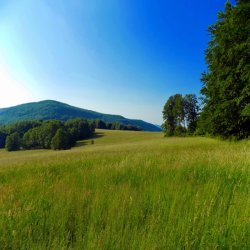
Liming soil is always recommended in soil tests to neutralize acidity. It is the only reason it is included. Here is a basic view on low pH soils to help answer the questions of liming or using liquid calcium.
First, I will tell you that soil pH is largely misunderstood. soil pH is only part of the acidity profile. People tell me that they add lime every year as a habit. They don't know if they need it or not, they just do it. You should never add lime unless it needs it because if you over lime you cannot remove it.
Problems with low pH
Low pH soils, below 4, restricts macro nutrients, such as calcium, Magnesium, Potassium, Phosphorus, etc. But it increases micro nutrient availability. High pH does the opposite.
Plus low pH soils build up Al and H ions. Al (aluminum) is toxic to plants, hinder nutrient availability and has an accumulative affect over time. It can restrict root growth among other things. You may have plenty of the nutrients mentioned above, but they are not getting to your plants. Soil lime neutralizes the affects of acidic soils allowing the nutrients to get to plants. Always apply soil lime on low pH sites.
Super-Cal and Agri-Cal Products
Super-Cal and Agri-Cal does two things when applied. It provides an immediately available source of calcium that can be foliar absorbed giving the plants an immediate boost. The organic acids in the product break down lime material faster than nature alone, reducing the affects of low pH more quickly.
Lower CEC soils will have a greater reaction to change than higher CEC soils.
Second, Super-Cal and Agri-Cal have organic acids that break down unavailable calcium in the soil that delivers calcium to your plants for another 90 days. The net affect can be 20 to 30 percent calcium.
In soils with 5 pH or greater you don't usually need lime if you are using Agri-Cal or Super-Cal, depending on how much lime material is in the soil naturally. Many substances will create carbonate, such as natural limestone in soil that will reduce the affects of soil pH when Super-Cal or Agri-Cal is applied.
In addition, the organic acids can help build up the calcium saturation and reduce acidity in the soils as it breaks down the limestone or applied lime.
Note: Calcium Chloride (liquid calcium) provides calcium but, in itself, doesn't affect soil pH. The organic acids can.
In very low pH soils, I always apply lime.
In neutral pH soils both macro-nutrients and micro-nutrients are available and using Agri-Cal or Super-Cal there is little risk of getting the pH out of whack while delivering needed Calcium.
High pH Soils
High pH soils (>7.3) restrict micro-nutrients while allowing macro-nutrients to reach plants. Some plants thrive in alkaline soils. Usually no lime or liquid calcium is needed unless calcium levels are low. If it is too high, Sulfur may be needed to neutralize the alkalinity.
Little Known Soil pH Facts
Soil pH is important. Most plants will do well within a certain pH level.
What is pH anyway? First, when testing the soil pH, the "pH" stands for Potential Hydrogen. You are testing for "free hydrogen" in the soil. Soil acids contain hydrogen ions. Plant material, nitrites, even lime when it breaks down releases hydrogen ions. The more free hydrogen the more acidic the soil.
Yet, what many don't know is that most things that are applied to soil will affect the pH.
Example: One person in N.C. called and stated his soil test came back and it was low in many nutrients. His pH was around 4.5. He stated he applied way too much potassium and his pH shot up to 8.7. He didn't apply anything else.
If you balance out your nutrients correctly, many tines the soil pH will also balance out. If you over-apply or under-apply nutrients it will affect the soil pH negatively.
Did you know that the only reason a soil test may show how much lime to apply is to raise the soil pH. But it is based on the soil that was tested. If you correct all nutrient deficiencies and after time check your soil pH it will not be the same as it was when the test was taken. The stated amount of lime need is no longer accurate since the soil is not the same.
One person called me and told me the soil test told him to apply 12 tons of lime per acre. This is a ridiculous amount. It would take years to apply that much lime and could actually ruin the fields. Lime recommendations are based on the soil sample and buffer pH that determines the amount of lime to apply. Again, if he corrected the other nutrient deficiencies the soil would most likely not need 12 tons.
Conclusion
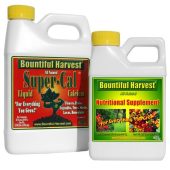
So many things affect soil pH. People are under the false impression that only lime or sulfur corrects it. Don't start by changing the soil pH first. Focus on balancing out the nutrients, based on a soil test and later worry about the soil pH.
We sell a product called "Super-Cal", a liquid calcium. It has both immediately available calcium and organic acids that work to break down unavailable calcium. It can build the calcium saturation levels in the soil without throwing soil pH out of whack. It is our number one selling product.
Why Fescue Shouldn't Be Planted in Late Spring or Summer
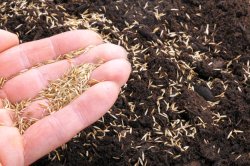
Turf Type Tall Fescue is a very popular grass type. It is planted in the Mid-West, Northern states and even in Southern California where temps can get well over 100 in summer.
Regardless of where you live, fescue may not survive if planted in late spring or summer. Why? Because it needs time to develop a good root system to endure summer temperatures. Planting in spring, especially late spring, will not give the plant time to develop the roots needed.
The Best Time To Plant Fescue
The best time to plant any Fescue type is in the fall. Here's Why. Being a cool season grass, Fescue will have time to grow and develop during temperatures that favor the grass when planted in late summer or early fall. The best time to plant is when the high temps are steadily in the mid 80's.
It will germinate, grow and then over-winter before it continues to grow in the spring. By this time the root system will have had time to develop before hot summer temps set in.
The second best time to plant fescue is in early spring. Just as the grass begins to show signs of emerging for dormancy, plant the seed. In southern California, this may be in February. Other areas will be in March or April. This will give it time to grow and develop a root system, that if the summer is mild, will give it the best shot. If you have an early, hot summer, it may still struggle to survive.
For more information on the differences in growing habits and grass types, click on the link.
Continue reading "Why Fescue Shouldn't Be Planted in Late Spring or Summer"
Growth Products Fertilizer
Growth Products Fertilizer is now on our website. What is Growth Products?
Growth Products is a top quality fertilizer and research company that produces the highest quality products for the Pro sports turf managers, sod growers and commercial lawn care companies. Now it is available to homeowners as well.
You know when you are using Growth Products you are using the same products that the best golf courses use.
Golf course managers often "spoon feed" greens feeding them once a week, just a few ounces per gallon, but for home lawns you can go much heavier. The 50% slow release will keep feeding the lawn for several weeks.
Find out why Growth Products are the top fertilizer used by many of the pros. Click the link for more information.
Growth Products 18-3-6 Classic Fertilizer
Growth Products 18-3-6 Classic Fertilizer
Continue reading "Growth Products 18-3-6 Classic Fertilizer"
Tiger Bloom Fertilizer
Tiger Bloom is a powerful fertilizer to maximize buds and blossoms for a better harvest.
Submitted Pricing Questions for Lawn Care
Pricing a job can be tough. Here is help from submitted pricing questions
Continue reading "Submitted Pricing Questions for Lawn Care"
Fertilizer Companies Mindset VS Facts
Most fertilizer companies understand that a green lawn is their primary selling point. Giving you green is their money in the bank.
What is wrong with that? We all want a dark green lawn, right?
They know most homeowners know nothing about what their grass needs or when it needs it or even the rate their spreader applies. For example, most homeowners, if they only fertilize once a year will fertilize in the spring. The fertilizer for cool season grasses often comes in formulations such as 32% nitrogen, etc. It is easy to over-fertilize and people often apply twice what is needed in spring. You get green grass that has to be mowed three times a week for a while. Too much nitrogen pushes growth at the expense of the grass. But the fertilizer company gave you a green lawn where people are often delivering 1 lb of nitrogen per 1000 sq. ft.
In reality, the spring fertilization only calls for about 1/2 a lb of nitrogen at most. The goal in spring is to replace the nitrogen used during the surge growth. 3/4 of the total nitrogen applications are applied in the fall for cool season grass, not spring.
On our site, we give the mathematical formulas to make it simple. Regardless of what the nitrogen content of the bag says, you can put down the exact amount you need. Click on the link below for more information on fertilizer rates.
Did You Know this Important Fact About Grass?
Did you know that for cool season grass, after you put the mower away for the year, the grass roots are still very active? Up until the soil temps dip into the 30's.
In fact, up to one l lb of nitrogen per 1000 ft is applied now. 75% of the totoal nitrogen is applied in the fall for cool season grasses. The roots are taking in large amounts of nutrients so it will have enough energy to begin the surge growth that takes place in spring.
Cool season grasses, like fescue, bluegrass, perennial ryegrass and others are going to start growing in early spring whether you want it to or not. It is part of the grass genetics. Putting down the highest single application of nitrogen now ensures it has all it needs to start the spring growth without sacrificing plant health to do it.
On the contrary, most warm season grasses, like Bermudagrass, zoysia, etc go dormant in fall and they take on no nutrients after they have gone dormant. They won't start growing until the soil temps rise enough in spring. For warm season grasses, you don't start fertilization until they start to grow in spring.
Just so you know.
Continue reading "Did You Know this Important Fact About Grass?"
'Tis The Season for Planting 5 Star Grass Seed
We have just gotten in our last shipment of the year of 5 Star Turf Type Tall Fescue grass seed. It is mid-October and there is still time to plant cool season grass. It is a high quality professional grass seed that produces a dark green, low growing Turf-Type Tall Fescue turf. We have plenty but it is going fast.
If you have any questions about our seed, please let me know. We will have more seed in early spring.
There is no substitute for a beautiful looking lawn. It raises home values and looks incredible.
The best time to plant 5 Star Tall Fescue is in the fall. The second best time is in the spring. Cool season grasses need the fall to start growing, over-winter and then finish growing in the spring so it develops deep roots to withstand the summer heat.
If you plant in the spring, be sure not to use any pre-emergents or it won't germinate. Plant as soon as the soil temps reach 55 degrees.
Continue reading "'Tis The Season for Planting 5 Star Grass Seed"
Tip of the Week: GMOs Vs AgriGro
Did you know that up to 80% of the grain and corn on the market is GMO (genetically modified organism) for increased crop size and bushels per acre, etc. Many countries have banned GMOs for health concerns and for good reason. Once a plant is genetically modified it cannot be unmodified.
How AgriGro is Different
All natural AgriGro provides many of the same results as GMO users, i.e. disease resistance, plant health, nutrient uptake, increased crop size and bushels per acre, but without the harmful side effects. This is scientifically tested and proven by several universities and by farmers around the world.
Check it out yourself and see.
Compost Tea - The Good and The Bad
More howeowners and even farmers are going organic. This is a good thing. Compost tea is one product I often hear people using.
Compost tea makers and formulas are popular and compost tea use has a big following. But how good are they?
While some people swear by them, others and even researches have mixed results.
Through a specific process involving constant aeration, molasses, and other ingredients, compost teas develop an abundance of microorganisms that is poured onto the soil. The idea behind compost tea is these microbes multiply first in a bucket and even more in the soil. Then, this addition benefits plants and stimulates growth. But the benefit of the tea is that it contain live bacteria that usually has no shelf life, therefore, they must be made using specific equipment and must be used immediately once the aerator is turned off or the microbes will die, often within minutes, or it will have little effect.
Important Bedrock Soil Microbiology Truth.
The Environment Selects - This is something that is learned by first year biology students, but is not well-known by most people outside of that.
Microbes that are in the compost tea will only survive if the soil chemistry is precisely what the bacteria need to survive, feed, multiply and grow. Even slight variations in soil chemistry are enough to select some while other bacteria die off.
Is the idea of compost tea or soil microbes an interest to you? For detailed information on Microorganisms in Soil please Click Here.
